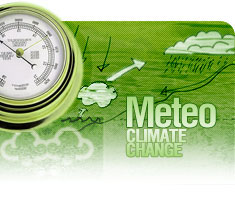https://news.trust.org/item/20200727173007-fa3uj/
As Britain's power grid operator touts carbon capture as key to meeting net-zero goal, just how useful is the technology?
As Britain aims for net-zero greenhouse gas emissions by 2050, the country's power grid operator said on Monday the target was "achievable" but required urgent action to harness new technology including carbon capture and storage (CCS).
Experts say, however, there are pitfalls in relying heavily on the use of CCS technology, which involves pumping emissions from electricity production permanently underground, as the National Grid does in its annual Future Energy Scenarios Report.
So just how useful is CCS in helping countries to reduce their emissions?
WHAT IS CARBON CAPTURE AND STORAGE?
CCS is a technology aimed at capturing climate-heating gases being pumped into the atmosphere and storing them long-term below ground or deep in oceans. In some cases, captured emissions can also be used to make products such as fuels and chemicals.
Many national plans to keep climate change in check rely on the use of CCS technology alongside switching to renewable power and greater energy efficiency.
HOW DOES IT WORK?
The process involves capturing carbon dioxide from some of the biggest emitters - power plants, heavy industries and oil refineries - before it can enter the atmosphere.
The gas is then transported as liquid - often through pipelines - for storage deep beneath the earth's surface or seabed, largely in caverns or porous spaces underground, including old oil wells.
The technology is not new. Elements of the process have been used since the 1920s, often as a way of pushing oil deposits up to the surface.
Used with fossil fuel power plants, CCS could slash emissions if enough underground storage could be developed at an effective cost.
But if power plants switch to run instead on biomass - wood, agricultural waste or other plants that absorb carbon dioxide as they grow - the subsequent use of CCS technology could make the electricity generation process carbon negative.
CCS might also be used eventually with still-developing, highly expensive "direct air capture" technology that could suck carbon straight from the air and lock it underground - another negative emission technology.
WHAT ARE THE PITFALLS?
CCS can be helpful as part of an emergency response to the climate crisis, but should not be considered a viable long-term option without a radical change in energy use, scientists and industry experts say.
It is not yet available at significant commercial scale and only a fraction of the space needed to store these emissions is currently available, with little progress toward creating sufficient space, scientists say.
Environmentalists fear focusing on pushing emissions from fossil fuel-powered plants underground - rather than shifting to clean renewable power and curbing energy waste - could slow a needed transition to clean power.
With storage space for captured emissions currently in short supply, some scientists argue that available capacity should be reserved for direct-air capture projects - not to allow coal, oil and gas power plants to keep operating.
Running power plants on wood and other biomass and storing the emissions underground also has risks, as making such a shift at scale would require huge amounts of land to produce the fuel, with potential risks to food security and community land rights.
HOW MUCH OF THE PROBLEM CAN IT SOLVE?
As global planet-heating emissions continue to increase, CCS could buy time to reduce emissions as the world weans itself off coal, oil and gas, which currently provide the majority of the world's energy.
But while proponents of CCS technology say it has the potential to capture up to half of the world's carbon dioxide emissions, scientists and environmentalists say switching to clean energy is still the cheapest and surest way to curb climate change.



 Română
Română English
English


